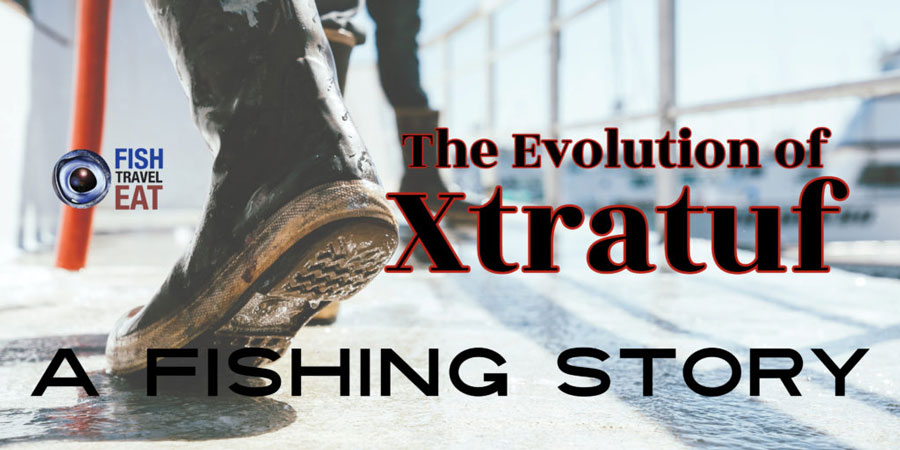
XTRATUF® has a great story. At it’s heart it is a story about fishing.
It was not ‘marketing’ that was driving the distribution of XTRATUF®s. It was rather something of a fishing diaspora.
In the last 10 years an entire category in the fishing world has been taken over by what amounts to a pretty incredible fishing story. A fishing story for sure, this one involves brand evolution couched equally in Alaskan identity and keeping feet safe, dry, and stable while on the water.

The story of XTRATUF®—and the brand’s conquest of the fishing footwear category— involves such disparate actors as commercial crab fishermen in the Bering Sea and lab scientists in the UK who test the friction coefficient of the boots against stainless steel covered in glycerine.
The story of XTRATUF®, and the brand’s evolution, is an intriguing one. You cannot tell the story without also talking of Alaska—it’s bountiful fisheries and the influence it casts upon the greater fishing world.
The story is not complete without the travel stories and the influences of place brought by the locations many of Alaska’s seasonal fishermen call home for the other nine months of the year.

You must also relate the work of a marketing expert whose job entailed meeting and fishing with all of these traveling fishermen (in Alaska and their other ports of call) and integrating their needs into the brand’s burgeoning product line.
The story relates as essentially to the ocean and those who make a living plying her waters as it does to footwear. This is the evolution story of XTRATUF® Boots.
The Backstory
While this may seem like a strange build up for a fishing story, XTRATUF®'s history involves many twists and turns. Bao Thai is XTRATUF®'s Global Product Manager.
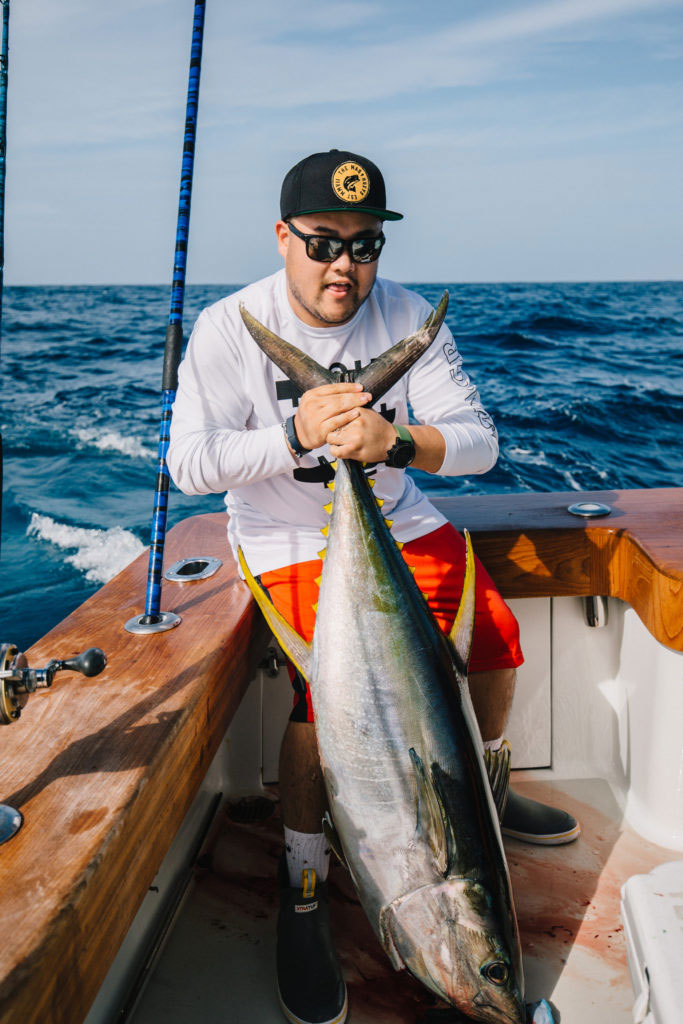
He is a driving force behind many of its innovations and full of perspective when it comes to relating the story. Thai has fished with captains from Alaska, Florida, Southern California and up and down the East Coast.
Bao is an interesting guy whose skill as a story teller is on display– even when he’s not trying to tell a story. There are not many better guides to interpret the events that have resulted in XTRATUF®'s present situation.
“The brand started sometime in the 1950s in Illinois. BF Goodrich owned it,” Thai explains. “The earliest product we have is from 1963.”
“Somehow, we’re not exactly sure when it happened, the boots made their way from Illinois to the West Coast and to Alaska,” Bao relates. “Currently there are about 700,000 people living in Alaska. By the numbers, about one out of every six or seven people in Alaska have a pair of XTRATUF®s.”
“The Classic Legacy 15-inch boot today is the same boot developed in the 1960s. Early on the boot was made to withstand harsher conditions than hand run rubber boots could handle at the time,” he says.
“Early on, the boot gained traction with dairy farmers and then somehow it made its way to the West Coast.”
Alaska: From a Seafood Perspective
Alaska and Washington State, it turns out, cast a broad influence in the fishing world. XTRATUF® Boots were perfectly suited for the types of work and the types of people in the region.
“By volume, Alaska and Washington harvest and process the majority of the seafood eaten in America,” Thai explains. The boots are ideal not only for the fishermen manning the decks of boats offshore, but also for the men and women who make their living in the processing plants. (Fish slime on metal floors, after all, is slicker than owl shit).
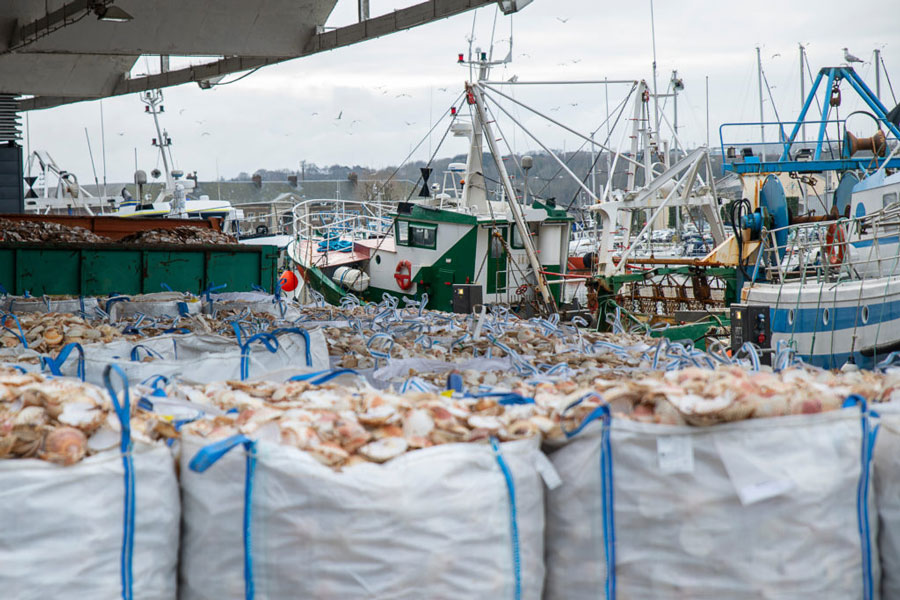
The pairing of XTRATUF® Boots and Alaska seems to have been something of a perfect marriage. Traditional rubber boots consist of cut sheets of rubber glued together.
XTRATUF®'s process involves taking a foot form and dipping it into a liquid solution of latex and neoprene. While traditional rubber boots fight movement, dipped neoprene is more flexible and pliable– it moves with you as you walk.
“The boots spread organically in Alaska. The footwear has grown to become almost bigger than the brand itself. Alaska brand and identity has sort of appropriated the footwear—it’s been exciting the see the momentum,” says Bao.
XTRATUF® products are on display aboard all manner of Alaska-based reality fishing television. Their placements in broader media are numerous as well. These are not paid placements—it has happened organically.

Understanding the unique appeal of XTRATUF® boots requires the consideration of place. By their very nature, boats are slippery places.
For those who make their living– or fulfill their passions– on a boat, assurance that your feet will stay where you’d like them to is an important consideration.
Where the Rubber Meets the Road in the XTRATUF® Story
Simply put, XTRATUF® boots keep your feet planted where you’d like them to be. The quality of their grip is such that they can change your perspective about the necessary functions of footwear.
Much like the first time you put on a pair of high quality polarized sunglasses, it doesn’t take long to consider investment in a pair as a necessary component rather than a luxury. The importance of the purchase grows with the amount of time you spend on the water.
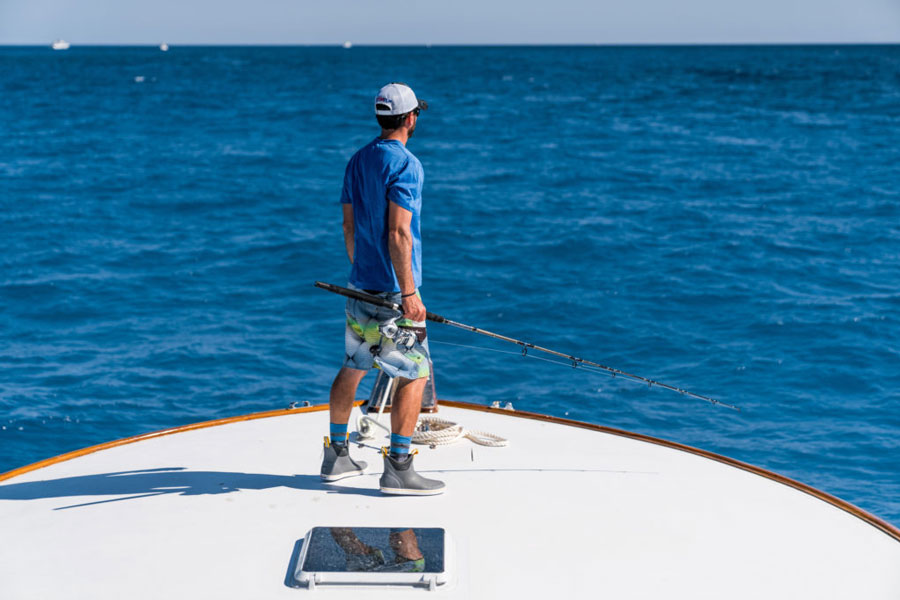
Whether you are working the cockpit of a crab boat or scrambling up to the bow of a sportfisher, wearing a pair provides obvious benefit. They are like lizard feet— the kind of lizards that run up and down windows to eat moths all night.
As it turns out, this is not by accident. The company invests a great deal of time and effort into ensuring that its products pass the slip test.
“All of our products are third party slip tested by SATRA, a UK-based company. They use their testing equipment (something that looks like a giant arm that presses a shoe against surfaces to measure the force required to make it slip) to test the friction coefficient of the boot on different surfaces,” Bao relates.
“SRA rated products are those that pass the friction threshold for soapy water on tile. All XTRATUF® products earn the SRA rating. SRB rated products are those that pass the test for glycerine on stainless steel,” he explains.
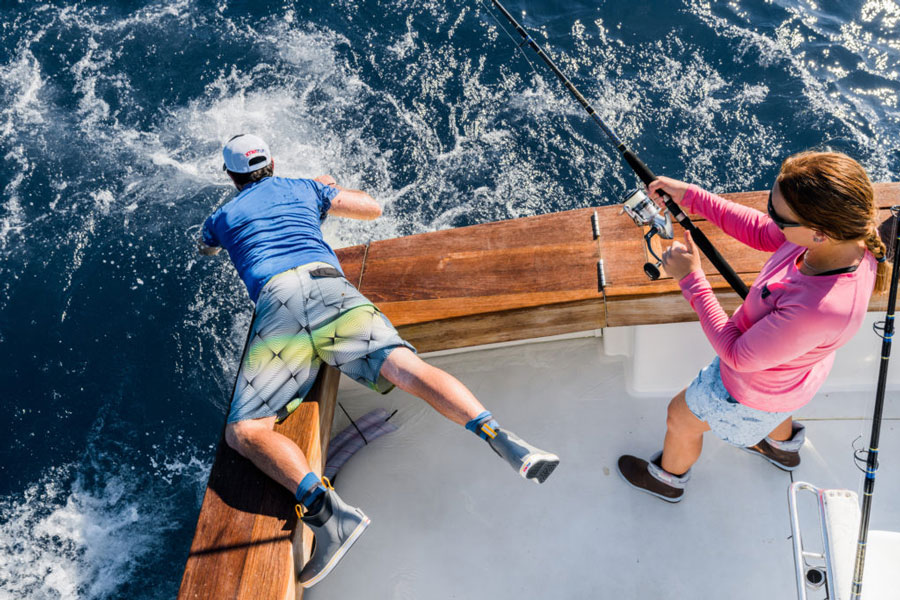
Products with both SRA and SRB certification receive an SRC rating. The company boasts a hand full of products that meet this standard.
Evolution
This is the interesting part of the XTRATUF® story. With its near universal distribution and a diverse product line that suites a variety of uses, it is easy to overlook the fact that for much of its existence XTRATUF® was perhaps the best-kept secret in fishing.
XTRATUF®'s masthead product is its 15” Legacy Deck Boot. The Legacy earned its name on the decks of commercial boats.
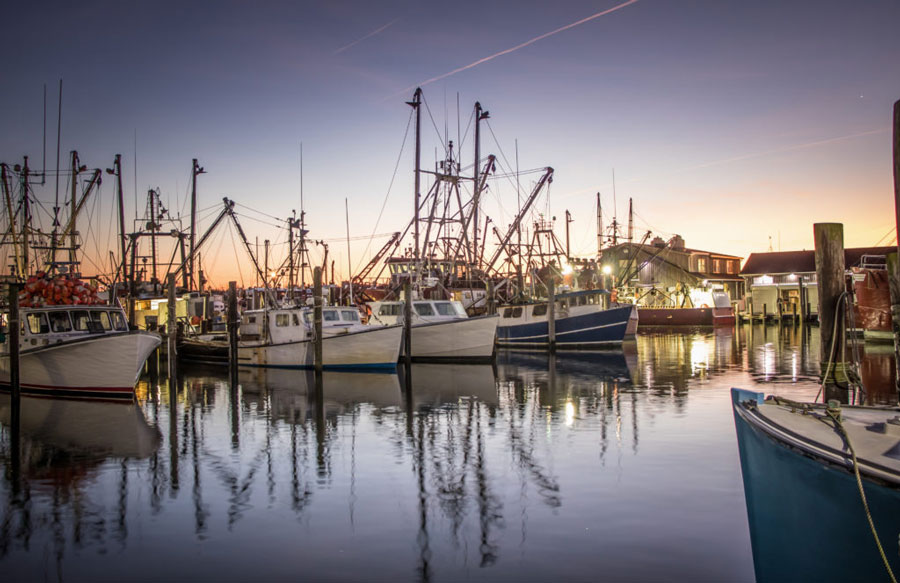
“Up until 2010 there were only 12 products in the XTRATUF® line. The brand’s focus was largely to make products for commercial fishing in the harshest fishing conditions,” Bao relates.
Bao himself started with Honeywell as a marketing intern in 2012. Through hard work and some fortuitous personnel changes, he soon found himself not only a permanent member of the marketing team but the brand’s Global Product Manager.
“The marketing model owned by Honeywell involves knowing your customer like the back of your hand,” Bao says. When they applied this approach to XTRATUF®, the logical first step involved trips to Alaska.
Alaska
In speaking with fishermen in Alaska, several conclusions came to light. “First, that the fishing industry is a small, closely connected world. We also realized that even if a fisherman had never been to Alaska, it’s an aspirational place,” Bao explains.
These conclusions create a fascinating dynamic– one that has driven product evolution directly.
Alaska is a seasonal fishery. Many of the men and women who work the season in Alaska (becoming exposed to XTRATUF®'s performance in the process), fish in the lower 48 for much of the remainder of the year.
When these men and women traveled back south, they brought their boots with them. Bao and his team realized that the same 15-inch Legacy Deck Boots that worked so well in the cold, rough waters of the Bering Sea were worn on charter docks in Key West, in Southern California and up and down the East Coast.
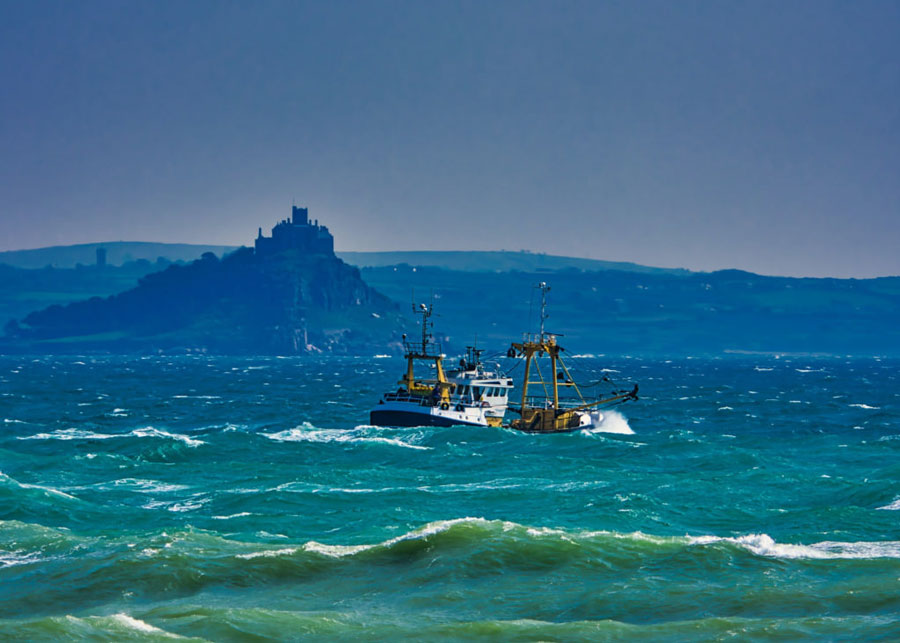
It was not “marketing” that was driving the distribution of XTRATUF®s. It was rather something of a fishing diaspora.
The people who work so hard to catch and process Alaska’s seafood—many of whom put their lives on the line to do so—do not do so accidentally. Most do so because they love fishing and the ocean.
While there exists an economic component of the season—folks can make the bulk of a year’s income in a few months, it is passion for fishing that lies at the core of those who travel north each year.
It was the same fisherman who wore XTRATUF®sin Alaska who first brought the boots to many of sportfishing docks in the lower 48. XTRATUF®s then set about working with captains and fishermen to make products suited for fishing in their home ports.
Product Evolution and The XTRATUF® Story
Bao and the XTRATUF® team next took their marketing approach and applied it to different climates and fishing applications. “The Short Deck Boot is the result,” Thai explains.
If you’ve fished anywhere in the past two or three years, you’ve seen a pair. This is part of the XTRATUF® story.

Bao traveled to Southern California, to Florida and up and down the east coast speaking with fishermen about what they need out of footwear and how to best adapt the core of XTRATUF® offering into a product suited for their application.
“My job is to know and distill the nuances of different fisheries,” he explains. “Then we meld them and the differences into products that meet the needs of different fisheries. From there, we work with retailers to tell the story.”
This process has resulted in stunning success. From a dozen or so commercial fishing focused products in 2010– sold mainly around Alaska and the Pacific Northwest, XTRATUF® has grown into a juggernaut.
At its most essential, this transformation has resulted from delivering the same grip, safety and dryness that the Deck Boot delivers to the cold waters of Alaska in offerings designed for fishermen in warmer, less hostile environments. Along the way, the company has delivered everything from ladies boots to offerings that work for casual applications as well.
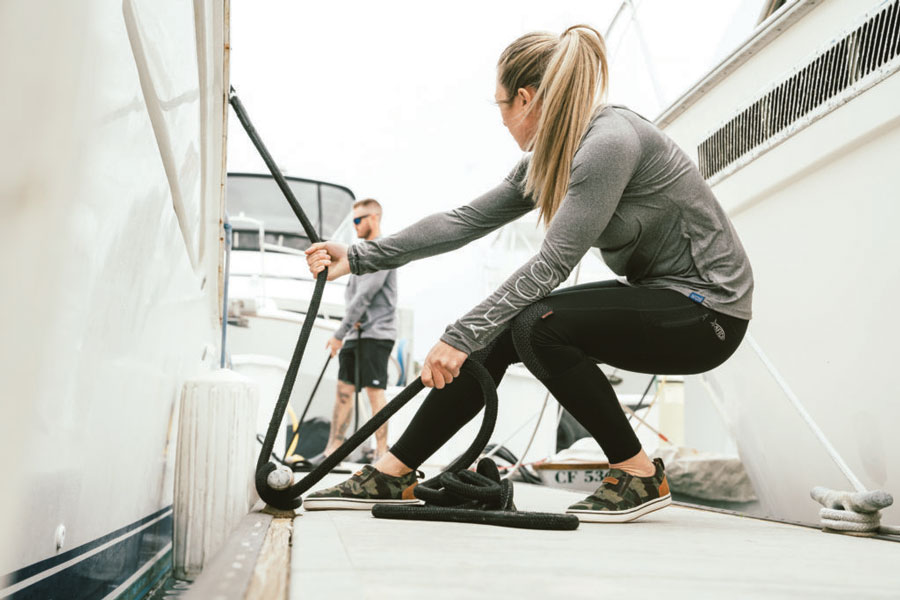
The Result
“It’s been very exciting to be on the brand for eight years. We started with 12 styles, we’re now north of 100,” Bao says, relating the XTRATUF® story.
“We’ve been super blessed and fortunate to have worked with complimentary brands—Filson, Yeti, Costa and Patagonia to name a few. The support of small, independent stores has been key to where we are today,” Thai explains. “We’re now working with larger retailers as well—REI, Dick’s, Bass Pro Shops, Scheels and many more.”
No matter where the road takes them, XTRATUF® remains at its core a fishing company dedicated to seafood and the men and women who catch and process it. The benefits of wearing a pair include not only safety and comfort on the ocean, but connection with the lifestyle that it represents.
For XTRATUF® it seems, evolution has resulted not only in growth but in affirmation of what it has always been. The evolution of XTRATUF® is a fishing story for sure… an interesting one at that.
Related Categories
• Legacy Fishing Boots
•
Commercial Fishing Boots
Popular Products
• Ankle Deck Boots
• SRA Rated
Fishing Boots
• SRC Rated Fishing
Boots
 United States
United States
 Canada
Canada
 United Kingdom
United Kingdom



